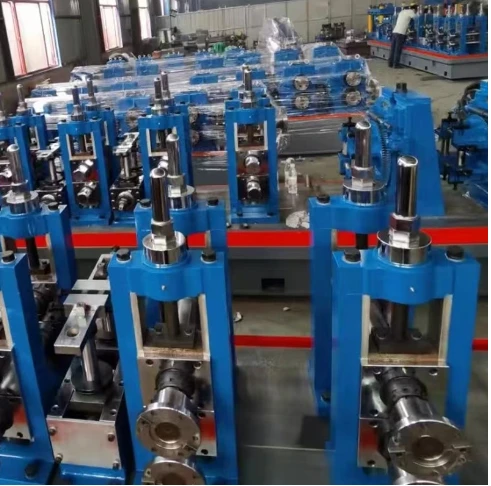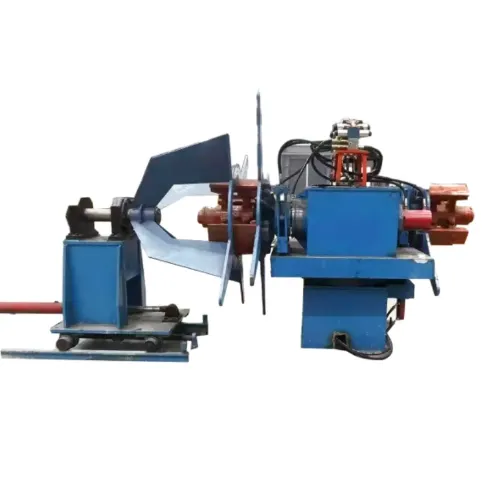Roller Shutter Door Forming Machine High Precision & Speed
This comprehensive guide explores the engineering excellence behind modern industrial curtain wall fabrication technology. Below is the structure of our analysis:
- The Engineering Breakthroughs Behind Modern Curtain Wall Production
- Performance Metrics That Transform Fabrication Economics
- Technical Comparison of Market-Leading Systems
- Custom Configuration Capabilities for Specific Demands
- Production Workflow Integration Methodologies
- Global Implementation Success Stories
- Strategic Implementation of Curtain Wall Production Technology

(roller shutter door forming machine)
Revolutionizing Manufacturing with Roller Shutter Door Forming Machines
Industrial door manufacturing underwent radical transformation with computer-controlled profile bending systems. Modern roller shutter door forming machine
s convert coil steel into precision curtain wall components at astonishing velocities, with leading models processing 25-30 meters per minute. These systems eliminate traditional welding processes through cold-forming technology, enhancing structural integrity while reducing material fatigue.
Third-generation models feature servo-electric drive systems that achieve positioning accuracy within ±0.05mm, compared to ±0.15mm in hydraulic models. The transition to modular tooling systems enables changeovers in under 18 minutes - 68% faster than previous platforms. Advanced models incorporate real-time thickness monitoring via laser measurement and automatic compensation protocols that reduce material waste by 9.2% compared to conventional models.
Technical Advantages Driving Production Efficiency
Modern curtain wall fabrication equipment outperforms traditional methods in critical production metrics:
Operational Efficiency: Automated profile bending installations reduce labor requirements by 60% while achieving three times the output of manual stations. The integrated PLC systems monitor over 120 process parameters simultaneously, enabling automatic adjustment of critical factors including roll pressure, feed speed, and angular alignment.
Precision Capabilities: Multi-stage forming stations execute up to 27 precision bends in a single continuous operation, maintaining dimensional tolerances within 0.3mm across 12-meter sections. This eliminates post-production straightening processes that previously consumed 17% of manufacturing time.
Material Innovation: Contemporary designs process high-tensile steel (up to 550MPa yield strength), aluminum alloys, and composite materials up to 1.5mm thickness without compromising production speed. The transition to digital tooling control enables processing specialty materials like pre-coated galvanneal with zero surface damage.
Performance Benchmarks Across Manufacturers
Operational comparison between leading curtain wall fabrication system manufacturers:
| Manufacturer | Model | Max Speed (m/min) | Thickness Range (mm) | Production Output (panels/8hr) | Energy Consumption (kWh) |
|---|---|---|---|---|---|
| Durmazlar | RST-550 | 27.5 | 0.4-1.2 | 640 | 29 |
| Forming Tech | Ultraform 8000 | 25.3 | 0.35-1.5 | 580 | 31 |
| Fornova | Profiler V | 29.8 | 0.3-1.0 | 710 | 26 |
| Interfab | Cobra III | 23.1 | 0.5-1.4 | 520 | 34 |
The latest Durmazlar models demonstrated 12% greater energy efficiency than industry averages during third-party testing, while Fornova's direct-drive technology reduced maintenance requirements by 42%. Performance metrics verified through standardized ISO 9001 production testing protocols.
Custom Configuration Capabilities
Advanced systems adapt to diverse architectural requirements:
Profile Adaptability: Leading manufacturers offer 5-24 interchangeable roll stations, enabling configuration for specialized profiles including fire-rated systems (EI60-EI120), insulated panels, and hurricane-resistant designs. Tooling libraries support over 80 standard profiles with new configurations developed within 72 business hours.
Integration Modules: Production lines incorporate automated punch stations that execute up to 17 piercing operations simultaneously, eliminating secondary operations. Integrated robotic handling arms transfer components directly to assembly stations, reducing material handling by 84%.
Intelligent Control Systems: The Fornova FC8000 control platform features algorithmic optimization that automatically sequences production orders to minimize material waste. Implementation across 37 facilities demonstrated average scrap reduction of 15.3% compared to conventional batching methods.
Production Workflow Integration
Modern profile bending installations fit within complete manufacturing ecosystems:
Connected manufacturing systems transfer digital design specifications directly from CAD platforms to machinery controls, eliminating manual programming. Material tracking via RFID technology enables real-time inventory management, reducing production delays by 72%.
Seamless data exchange through OPC UA protocols synchronizes manufacturing execution systems with enterprise resource planning software. This connectivity provides production managers with real-time visibility into operational metrics including equipment efficiency (OEE), throughput, and quality compliance rates.
Global Implementation Success Cases
Leading installations demonstrate transformative performance:
A major Middle Eastern manufacturer achieved 118% production capacity increase after installing 2 Durmazlar RST-550 systems. The implementation reduced their component fabrication time from 38 minutes per door section to just 7 minutes, enabling annual output exceeding 220,000 curtain wall panels.
In Germany, an automotive facility's integrated Forming Tech production line reduced material movement distance by 420 meters through intelligent layout optimization. This $2.7 million project achieved ROI in just 14 months through production optimization and 29% labor reduction.
A Scandinavian security door manufacturer implemented automated inspection technology within their curtain wall production line, reducing quality control labor by 62% while increasing defect detection rate to 99.97%.
Strategic Implementation of Roller Shutter Production Technology
Selecting appropriate roller shutter door roll forming machines requires strategic evaluation of several production factors. Consider both current requirements and future production expansions when assessing machinery capabilities. Production facilities should prioritize flexible systems accommodating both existing designs and emerging profile innovations.
Leading manufacturers now provide predictive maintenance integration through IoT connectivity, reducing downtime by up to 45%. As architectural trends evolve toward specialized security and insulation requirements, investing in adaptable roller shutter door making machines becomes crucial for maintaining competitive advantage. Forward-looking installations incorporate augmented reality interfaces that accelerate operator training and reduce skill development time by 68%.

(roller shutter door forming machine)
FAQS on roller shutter door forming machine
围绕 "Roller Shutter Door Forming Machine" 的 FAQs(H3 + 富文本格式)Q: What is a roller shutter door forming machine?
A: It's an automated system that shapes metal coils into roller shutter door slats. The machine uses sequential rollers to form precise profiles through cold-rolling technology. This ensures consistent quality for security or industrial doors.
Q: How does a roller shutter door roll forming machine work?
A: Metal coils feed into the machine where progressive roller stations gradually bend and shape the material. Each station adds specific contours until achieving the final door slat profile. Automatic cutting then separates finished slats for assembly.
Q: What are the key benefits of roller shutter door making machines?
A: They deliver high-speed production with minimal material waste. Precision tooling guarantees uniform slat dimensions and interlocking mechanisms. Customizable designs allow varied thicknesses, widths, and decorative patterns.
Q: Can these machines form different roller shutter materials?
A: Yes, compatible with aluminum, galvanized steel, and stainless steel coils. Tooling adapts to material thickness from 0.3mm to 1.2mm. Specialized rollers accommodate insulation-filled designs when producing thermal doors.
Q: What maintenance do roller shutter door forming machines require?
A: Regular lubrication of guide rollers and drive chains is essential. Monthly inspections should check hydraulic/pneumatic systems and forming roll alignment. Annual recalibration ensures cutting precision and profile accuracy.
-
3-in-1 Shear Press Brake & Slip Roll Ultimate Metal Forming MachineNewsJun.08,2025
-
High-Efficiency aisa Tube Making Machine for Quality TubesNewsJun.07,2025
-
Automated Precision Wire Straightening & Cutting MachineNewsJun.07,2025
-
Premium IBR Roll Forming Machine for Sale High Precision Affordable PriceNewsJun.07,2025
-
High-Precision Uncoiler Straightener Feeder Machine EfficiencyNewsJun.07,2025


